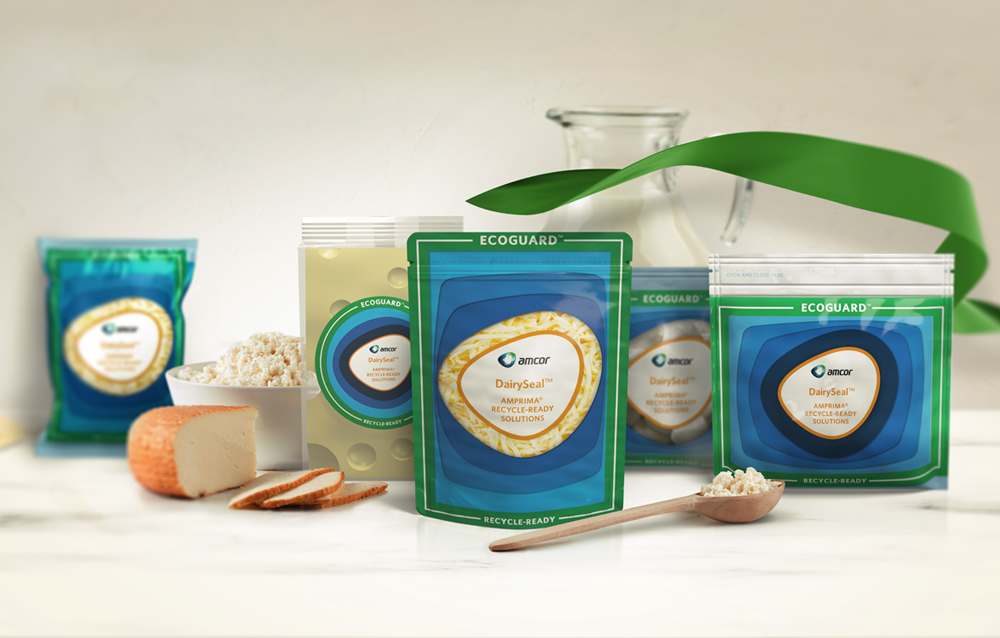A Guide to More Sustainable Cheese Packaging
Trends
February 15, 2024Reading time: 2 minutes
Consumer preferences and focus on sustainability, along with new packaging laws, are influencing the evolution of dairy packaging. How can you create more sustainable packaging for your cheese and keep up with upcoming regulations and consumer's preference? Read on to find out.
Consumer preferences and focus on sustainability, along with new packaging laws, are influencing the evolution of dairy packaging. How can you create more sustainable packaging for your cheese and keep up with upcoming regulations and consumer's preference? Read on to find out.

In this article, we will explore best practices for designing more sustainable cheese packaging and the broader trends influencing the industry.
What is driving the change towards more sustainable packaging in the cheese industry?
-
European Consumers: Consumers are increasingly concerned about the environmental impact of their purchases. Ongoing public discussions on plastic pollution, the circular economy, and the impacts of climate change have resulted in a shift in expectations regarding recyclability. Once seen as desirable, recyclability has now become a requirement for packaging in the eyes of consumers.
-
Regulations: In line with the European Union's transition to a circular economy, several legislative changes are being proposed or enacted. These include the EU Packaging and Packaging Waste Regulation (PPWR), the EU Waste Framework Directive, and the Single-Use Plastics Directive. Additionally, some countries have put in place Plastic Taxes, such as the UK and Spain, and soon Italy.
-
Company pledges: Brands are committing to a more sustainable future for their business operations and packaging choices, and setting goals on how to reduce the impact of their packaging.
How has Amcor's cheese packaging evolved with these trends?
We can help brands and retailers explore innovative approaches to more sustainable packaging to meet consumer expectations and upcoming regulations.
Our approach to cheese packaging centers on five key areas:
1. Material Selection: Whether plastic, paper, or aluminum, we can help you choose the best solution for your cheese packaging in terms of sustainability and performance, always keeping consumers' preferences in mind.
2. Move to Recycle-Ready Solutions: Since recyclability is considered a must-have by consumers and soon by regulators, after material selection, it should be your next step in your packaging journey. Our AmPrima® mono-PE and mono-PP packaging solutions support the transition to recycle-ready packaging structures while maintaining high performance.
3. Carbon Footprint Reduction: Through our ASSET lifecycle assessment service, we can help you quantify and understand your packaging's impact on the environment and suggest how you might reduce it.
4. Incorporate Recycled Content: After designing packaging to be recycle-ready, the next step is to incorporate recycled content. This reduces the pressure on virgin resources, contributes to a circular economy and reduces plastic taxes in Spain and, in some countries, reduces EPR fees.
5. Food Waste Reduction: Consumers prefer the ease-of-use of resealable packaging, with the convenience of not requiring a second container after the cheese is opened. We can share reclosable packaging options that help cheese last longer.
Can recycled material be used in cheese packaging?
Yes, recycled material is a viable option for dairy packaging. Amcor has secured a supply of chemically recycled, certified circular polyethylene for use in food packaging. With a commitment to using recycled materials and by using certified claims, your brand can create a positive image and potentially increase loyalty and market share.
Is it possible to reduce cheese packaging's carbon footprint?
Amcor offers the ASSET™ lifecycle assessment service, certified by the Carbon Trust, to measure and reduce packaging carbon footprints. Brands that achieve a 20% or greater carbon footprint reduction can qualify for a certified Carbon Trust label on their packaging.
Are you involved in dairy packaging decisions? For further insights into sustainable dairy packaging, download our comprehensive guide here.
Related Insights
Saputo Dairy UK | Award-winning grated cheese packaging that's more sustainable
November 1, 2023
Amcor and Saputo Dairy UK won ‘Flexible Plastic Pack of the Year’ at the UK Packaging Awards 2023. The companies have been recognized for developing a new, recycle-ready grated cheese packaging for the nation’s favourite cheese brand, Cathedral City.
Amcor and Saputo Dairy UK won ‘Flexible Plastic Pack of the Year’ at the UK Packaging Awards 2023. The companies have been recognized for developing a new, recycle-ready grated cheese packaging for the nation’s favourite cheese brand, Cathedral City.
Delivering premium soft cheese in recyclable paper packaging with Fromagerie Milleret
January 17, 2024
Amcor and Fromagerie Milleret have worked together for over 30 years, leveraging their in-depth knowledge of soft cheese products to bring more sustainable packaging to some of France's most loved cheese brands.
Amcor and Fromagerie Milleret have worked together for over 30 years, leveraging their in-depth knowledge of soft cheese products to bring more sustainable packaging to some of France's most loved cheese brands.
Cheddar Cheese: The UK's favorite cheese
May 15, 2023
According to local legend, Cheddar was discovered by accident over 800 years ago when a milkmaid left a pail of milk in the nearby Cheddar Gorge caves and returned some time later to find the milk had turned into a new tasty substance – cheese!
According to local legend, Cheddar was discovered by accident over 800 years ago when a milkmaid left a pail of milk in the nearby Cheddar Gorge caves and returned some time later to find the milk had turned into a new tasty substance – cheese!

